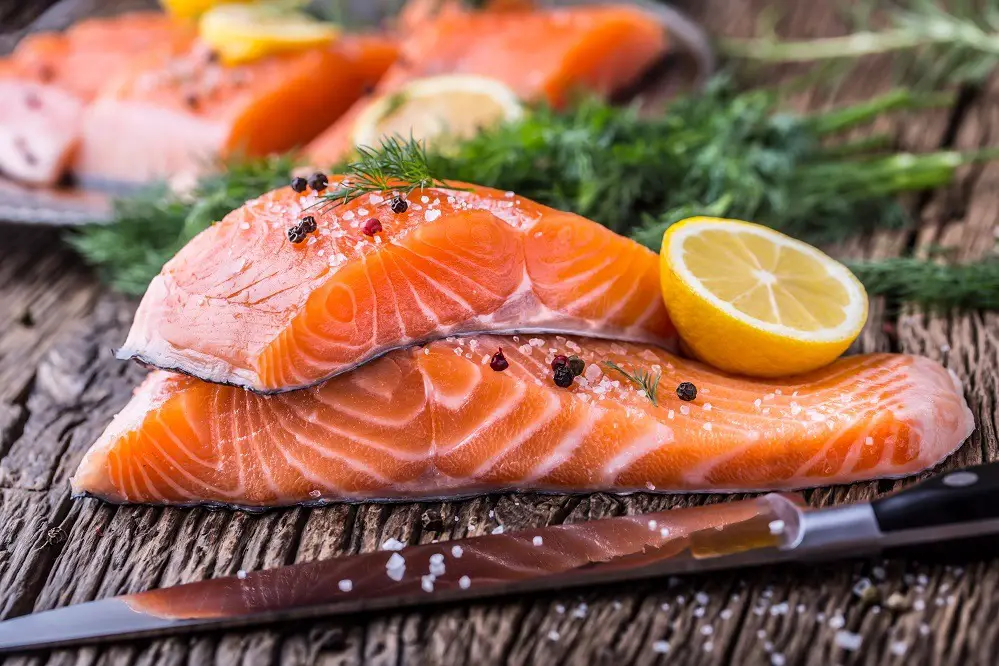This post contains affiliate links. As an Amazon Associate I earn from qualifying purchases
Those who work with knives like professional chefs and butchers are definitely familiar with a boning knife and a fillet knife. However, if you haven’t undergone butcher training or finished cooking school, then you probably are unaware of the differences between the two.
It may not concern you over which knife to use if you are an avid fisher, though. Most anglers go for whatever knife is available as long as it works. But if precision is important and the quality of cuts is essential, you must know which is the better choice between the two.
Table of Contents
Boning Knife vs Fillet Knife: A Detailed Comparison
These two knives can basically cut fish and meat, but they have distinct functions. Ideally, you use the one for boning and the other, wait for it, for filleting; guess which one! To give you more ideas about the two, here is a comprehensive list of their differences and similarities:
Functions
A boning knife and fillet knife obviously have their own purposes. The boning knife is mainly used to detach the meat from bones while a fillet knife is used to separate the meat from the skin.
While it can be acceptable to use these two knives interchangeably, keep in mind that doing this will affect the cut quality. Moreover, using a fillet knife to debone and vice versa can be more difficult than you think, especially to inexperienced hands.
For instance, a fillet knife is used for deboning a fish; should you use a boning knife instead, you are more likely to find it hard, and if this works, it usually works only on small fish. A filleting knife is thinner, more flexible and much easier to use on fish to remove the spine and other small bones along with the skin.
The boning knife, on the other hand, is typically rigid and bending it to fillet closely to the skin might become a struggle.
Hence, while you can possibly use these knives interchangeably, it is still ideal to use them on their optimal function to ensure cleaner cuts and better outcomes.
Design Difference
Design-wise, both knives are comparatively narrower than other kitchen knives. Their thin profile makes them ideal for accurate and intricate cuts. Nevertheless, the narrowness of the blade is just what makes them similar in regards to their design.
A boning knife is thicker when it comes to blade depth, and it is relatively stiffer as well. This is because boning knives are designed to work on hard bones and chunks of meat. The fillet knife is thinner with a noticeable flex that makes it easier to use in filleting.
Moreover, apart from the blade thickness, another obvious difference when it comes to design is the curve. Since it is used to pierce meats and remove the meat from the bones, the boning knife is typically straight all over, much like a regular kitchen knife—albeit much thinner.
The fillet knife has a pronounced curve that makes long, steady cuts easier to execute. The curved blade is great for filleting but not a practical choice for other cutting needs.
Blade Length
Boning knives usually come with a five- or six-inch blade, with occasional varieties seen in longer blades up to nine inches. Filleting knives, however, have more available blade lengths like four-, six- or 7.5-inch blades, and sometimes nine-inch ones.
Most of the time, we settle for a 7.5-inch blade because its size is just right for many types of fish. When choosing fillet knives, those with longer blades are best for bigger fish while shorter blade lengths are ideal for smaller fish. Easy to remember when you think of it.
Materials Used
Most good-performing knives are made with a corrosion-resistant material such as high-carbon stainless steel. It is the best choice when it comes to blade material because it’s actually better than regular stainless steel.
Check the materials used for both the blade and the handle. Regardless of the type, always go for the one that offers great quality and durability. The blade must be sharp to begin with and easy to sharpen after a few dulling cuts. The common handle materials are hardwood, plastic, steel, and Polypropylene. Wooden handles, especially those made with Rosewood and other hardwoods, are durable and give the knife a natural look and feel. However, they are more prone to cracking when submerged in water.
Plastic handles are flexible and ideal for both indoor and outdoor use while steel handles offer a strong grip. Polypropylene is a good choice as well because it is hard-wearing and water-resistant.
Maneuverability
When we talk about maneuverability, the vote goes to fillet knives. Because of its thin blade and a pronounced curve, a fillet knife will remain your most reliable choice when it comes to ease of control. From gutting and scaling to filleting, its efficiency is unmatched. Remember that a fillet knife will not work as well on tough meat and you might end up damaging the blade.
On the other hand, while the boning knife can do the same jobs as the fillet knife can, it would be less efficient. Nevertheless, you can always rely on the boning knife whenever deboning is involved.
Resistance to Force
Since fillet knives are much thinner and more flexible, it is also more delicate. Its thin and flexible blade makes it able to do what it is supposed to do—filleting. However, because it has become delicate, it is more likely to snap when applied with excessive force.
As already mentioned, boning knives are thicker and have a stiffer structure so that they can tolerate more force without the risk of snapping.
Conclusion
Both tools have their own advantages and weaknesses. For chefs, cooks, or butchers out there, it is recommended to have a good fillet knife and boning knife because they can both help you a lot in a professional kitchen.
Nevertheless, if you are going to use the knife mainly for fishing, and you have to choose between the two, it is best to pick the fillet knife. It is much more versatile and can efficiently do a lot more compared to a boning knife.
I don’t think any of us are going to lose any sleep over which one to choose. In the end, the choice lies in your personal preference. Whatever that is, our recommendation is to go for the best quality your money can get.


